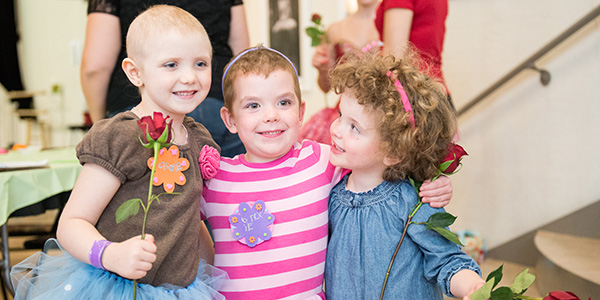ABOUT OUR BELIEF IN A CURE
BRAIN CANCER FACTS
A cure to cancer begins with our children. Today, many cancer experts believe that research directed at pediatric brain cancer may offer us clues to curing other forms of cancer, both adult and pediatric. Rather than funding cancer research according to the number of diagnoses and starting first with adult trials, they advocate that substantial advances can only be made through a focused approach and innovative techniques.
A new strategy for fighting cancer starts today. The Cure Starts Now is dedicated to pursuing cancer research on those fronts that offer the most promise rather than simply fighting “cancer by the numbers” as we have for the past 70 years. And in doing so, we pledge that the fight against cancer will be won. Curing cancer, one child at a time. The cure starts now.
Many experts believe that the information we gain from a cure to pediatric brain cancer may provide us critical advances in other forms of cancer, both adult and pediatric.
– The Cure Starts Now Medical Advisors
- Research to find new treatments for childhood brain tumors represents one of our greatest opportunities to advance cancer research in general. – The Cure Starts Now Medical Advisors
- More than 359,000 people in the U.S. were living with a diagnosis of a primary brain and central nervous system tumor in the year 2000. – Pediatric Brain Tumor Foundation
- In the year 2000 more than 26,000 children in the U.S. were living with the diagnosis of a primary central nervous system tumor. Each year 3,400 new cases are diagnosed. – Central Brain Tumor Registry of the United States (CBTRUS) report, Primary Brain Tumors in the United States, 2004-2005.
Every day nine children in the U.S. are diagnosed with a brain tumor.
– Pediatric Brain Tumor Foundation
- Brain tumors are the leading cause of cancer death from childhood cancer, accounting for 24 percent of cancer-related deaths in 1997 among persons up to 19. – Report of the Brain Tumor Progress Review Group; published in 2000 by the National Cancer Institute and the National Institute for Neurological Diseases and Stroke.
- There are more than 120 different types of brain tumors, making effective treatment very complicated. – Pediatric Brain Tumor Foundation
- Pediatric brain tumors are different from those in adults and are often treated differently. – Pediatric Brain Tumor Foundation
Cancer is the number one disease killer of children in America - more than Cystic Fibrosis, Muscular Dystrophy, Asthma and AIDS combined.
- Because brain tumors are located at the control center for thought, emotion and movement, their effects on a child’s physical and cognitive abilities can be devastating. – Pediatric Brain Tumor Foundation
- Quality of life for survivors of pediatric brain tumors is influenced by the long-term side effects of treatments such as chemotherapy and radiation. – Pediatric Brain Tumor Foundation
- 1 in 330 children in the U.S. will develop cancer by age 20. On the average, 12,500 children are diagnosed with cancer each year.
- The cause of most childhood cancers are unknown and at present, cannot be prevented. (Most adult cancers result from lifestyle factors such as smoking, diet, occupation, and other exposure to cancer-causing agents).
At this time, brain cancer research is underfunded and the public remains unaware of the magnitude of this disease. The cure rate for most brain cancers is significantly lower than that for many other types of cancer.
- According to a September 12, 2008 article by Helen Jonsen, Forbes.com senior editor, the funding for pediatric cancer clinical trials has gone down every year since 2003, and is currently $26.4 million. By comparison, NCI funding for AIDS research was $254 million in 2006; funding for breast cancer topped $584 million the same year.
- We may spend 3-5 times the amount of research money per patient on most adult cancer cases than we do on children with cancer.
- In general, children with Central Nervous System (CNS) cancer do not share the favorable prognosis of those with many other common pediatric neoplasms. – National Cancer Institute
- 1 child out of 5 who is diagnosed with cancer dies. – CureSearch
To learn more about DIPG facts, causes, and treatment, please visit dipg.org

